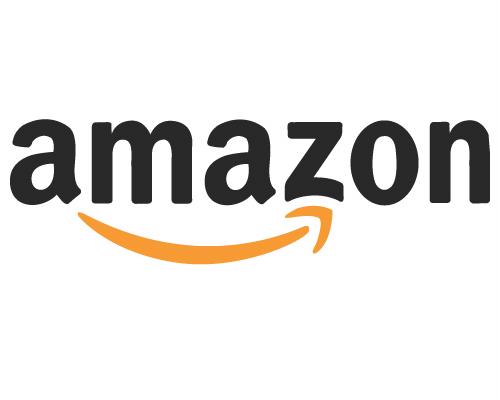The aftermath of Amazon Prime Day: 5 things we learned
Written By: Cara Wood

The Takeaway: This year's Amazon Prime Day has taught us few lessons about ecommerce, online shopping behaviors and the modern retail space in general.
Did you buy anything on Amazon Prime Day? If you did, you likely spent around $112, contributing to the $2.5 billion in sales that Amazon raked in. And your order was just one of approximately 22,321,428 other Amazon Prime Day transactions.
Pick your jaw up off the floor, and ask yourself a better question. Did your brand benefit from the Amazon Prime Day sales event? The answer is probably yes.
For example, AdAge indicated that Amazon Prime Day contributed to an uptick in traffic on other retailers' ecommerce pages. Sites such as Target, Macy's, Walmart and Best Buy all experienced boosts in traffic on July 12, with some retailers seeing traffic rise threefold compared to a normal Tuesday.
"Amazon brought more shopping traffic online, but didn't take away sales from other retailers," Jonathan Opdyke, chief executive and co-founder of HookLogic, explained.
"A sales event on one ecommerce channel can boost conversions on another."
In other words, it doesn't really matter what site your customers buy from, as long as they're purchasing your product. And on Prime Day, shoppers were scouring the web for items, on sale or not. Therefore, this year, we learned that a sales event on one ecommerce channel can boost conversions on another. This is great news, but it stresses the importance of cross-channel product content consistency (which we explain in greater depth in this blog post).
What else did we learn about ecommerce thanks to Prime Day? Great question!
Ecommerce sales create traffic on regularly priced items.
This is kind of obvious when you think about it. Traffic spiked on Amazon.com due to Prime Day, and those visitors found their ways to other products which weren't necessarily on sale. When shoppers performed a search on Amazon on July 12 or chose to see similar items, they were presented with results that included other regularly priced products as well. That means exposure for your brand and your products.
"[Amazon Prime Day] served as an unparalleled opportunity for sellers and vendors to expose their products to Amazon shoppers, with a focus on those customers with Prime memberships," said Pat Petriello, Marketplace Channel Manager at CPC Strategy.
So, next Prime Day or for another upcoming huge online sales event, make sure your product page for all of your items is up to par. Melissa Burdick provided some tips for improving product pages on Amazon, but those ideas certainly extend to other ecommerce sites.
 Consumers will search far and wide for products - even if another site is having a huge sale.
Consumers will search far and wide for products - even if another site is having a huge sale.Amazon Prime Day also reinforced the fact that shoppers love curated collections.
See, last year, Prime members were upset that Prime Day was really just a warehouse clearing sale. Lots of items were relatively useless to the everyday consumers. This year, Amazon stepped its game up, and it worked - Internet Retailer said this sales day was the "biggest" ever for the A-to-Z etailer.
"By being more selective and calculated with their Lightning Deal and featured deal selections, Amazon was able to provide a better experience to its shoppers, which was a key driver in why this year's Prime Day was so successful," according to Ethan Pilkenton-Getty, Manager Marketplace Channel Operations at CPC Strategy.
"Shopping behaviors will continue to evolve."
Mobile shopping is the norm.
This isn't news by any means - we've talked mobile shopping before. But we need to mention this: Around 12 million shoppers used Amazon's mobile app on Prime Day, Fortune reported. In different terms, 4 million (35 percent) more people used Amazon's app than usual, and they weren't just browsing. Mobile app orders rose over 100 percent compared to 2015.
And lastly, we learned that shopping behaviors will continue to evolve. Over the past 10 years, there was a huge shift from physical to ecommerce and now mobile is a major retail channel. Prime Day gave us a glimpse into what's next: Orders submitted via Amazon's Alexa-enabled Echo - that Bluetooth speaker thing that listens to you and does other fancy stuff - grew 250% over Prime Day 2015. Combined with Amazon Tap, shoppers used their voice to complete one deal per second in the U.S. on Prime Day. Is conversational commerce coming quicker than many thought? Maybe.
That closes the books on another Amazon Prime Day. Now it's time to set your sights on the holiday shopping season.
Written by: Cara Wood
Cara Wood (she/her) is a writer and former director of brand journalism at Salsify, where she specialized in creating content to help brands excel in ecommerce. Her work has helped organizations enhance their digital shelf and product experience management strategies.
Recent Posts
5 Ecommerce Tips To Help Marketers Enter the New Year Stress-Free
How Many Digital Sales Channels Do Shoppers Review Before Purchasing Products?
What the Data Says About Consumer Interest in AI Shopping Agents
Subscribe to the Below the Fold Newsletter
Standing out on the digital shelf starts with access to the latest industry content. Subscribe to Below the Fold, our monthly content newsletter, and join other commerce leaders.

.svg)